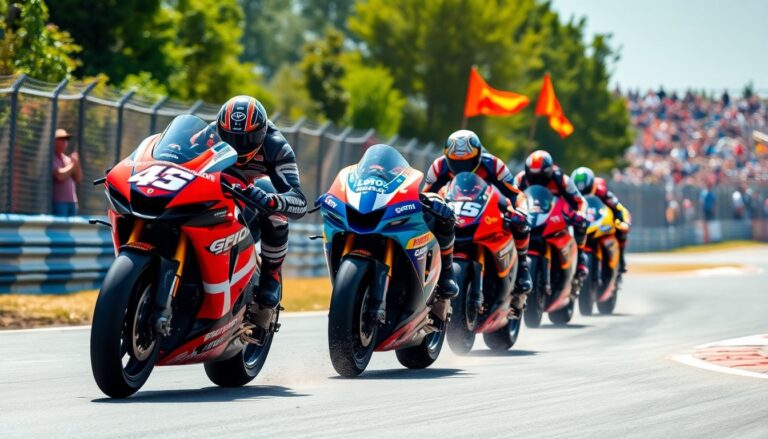Argomenti trattati
The world of MotoGP represents a remarkable fusion of speed, skill, and technology. As the premier class of motorcycle road racing, it captivates millions with thrilling competitions and the impressive capabilities of riders and machines. Each season, enthusiasts eagerly anticipate the roar of engines and the sight of riders pushing their limits on iconic tracks worldwide.
This article explores the intricacies of MotoGP, examining its history, the technology behind the bikes, and the factors that make it one of the most exhilarating sports today.
The evolution of MotoGP
MotoGP has a storied history that traces back to the early 20th century. The championship has undergone significant transformation over the decades, evolving from racing on public roads to the highly specialized circuits seen today. The Grand Prix motorcycle racing series commenced in 1949, initially featuring a limited number of manufacturers and riders.
As the sport advanced, so did the technology. The introduction of four-stroke engines and improvements in aerodynamics revolutionized bike construction and racing dynamics. The pivotal shift from two-stroke to four-stroke engines in the early 2000s marked a crucial turning point in MotoGP history, resulting in faster lap times and heightened competition.
The rise of the manufacturers
Today, MotoGP showcases a diverse range of manufacturers, including Yamaha, Honda, Ducati, and KTM. Each brand contributes unique technological innovations and racing philosophies. For example, Yamaha is celebrated for its agile handling, while Ducati is recognized for its powerful engines. The intense rivalry among these manufacturers fosters continuous improvement and innovation, leading to breathtaking races.
The technology behind MotoGP bikes
Central to the excitement of MotoGP is the technology powering these remarkable machines. Each bike is a testament to engineering excellence, designed to optimize performance, speed, and rider safety. A critical component is the electronic control unit (ECU), which regulates everything from fuel injection to traction control.
Moreover, the use of carbon fiber and other lightweight materials in frames and bodywork enhances performance without sacrificing strength. This emphasis on weight reduction and aerodynamics is vital, as every gram is crucial when racing at speeds exceeding 200 mph.
Rider skill and strategy
While technology is pivotal, the rider’s skill and strategy ultimately determine success on the track. Each rider must possess an in-depth understanding of their bike to extract its maximum potential. This requirement involves not only physical strength and agility but also mental acuity for making split-second decisions during races.
Riders meticulously analyze data from previous races, focusing on every aspect of their performance, including braking points, acceleration zones, and cornering techniques. This thorough preparation enables them to devise a racing strategy tailored to their strengths and the track’s characteristics.
The thrill of competition
One of the most exhilarating aspects of MotoGP is the fierce competition among riders. The championship comprises multiple races throughout the season, with points allocated based on finishing positions. This points system maintains the championship race’s intensity until the final event, as riders compete for the prestigious MotoGP World Championship title.
This article explores the intricacies of MotoGP, examining its history, the technology behind the bikes, and the factors that make it one of the most exhilarating sports today.0
The global fanbase
This article explores the intricacies of MotoGP, examining its history, the technology behind the bikes, and the factors that make it one of the most exhilarating sports today.1
This article explores the intricacies of MotoGP, examining its history, the technology behind the bikes, and the factors that make it one of the most exhilarating sports today.2

